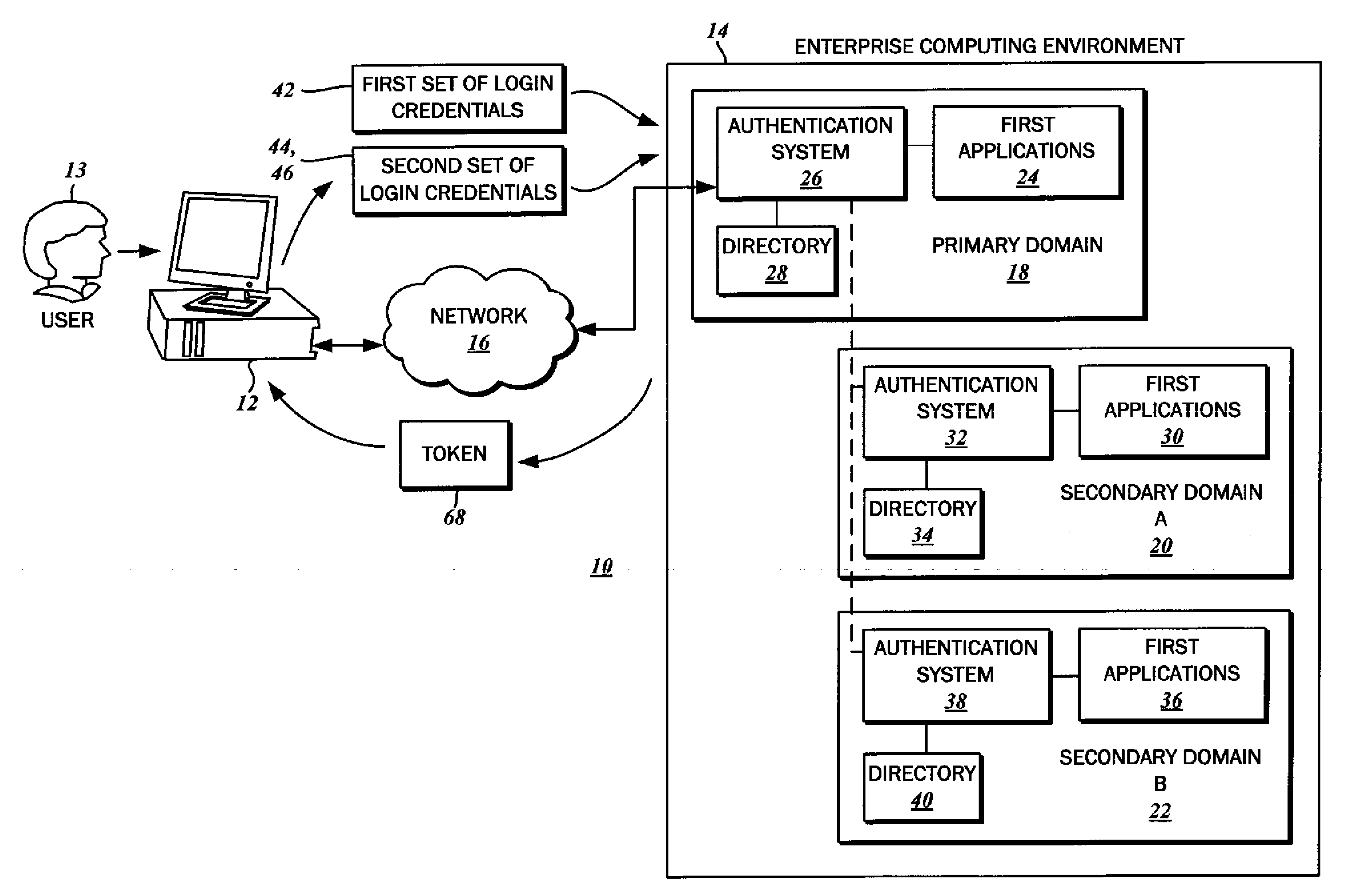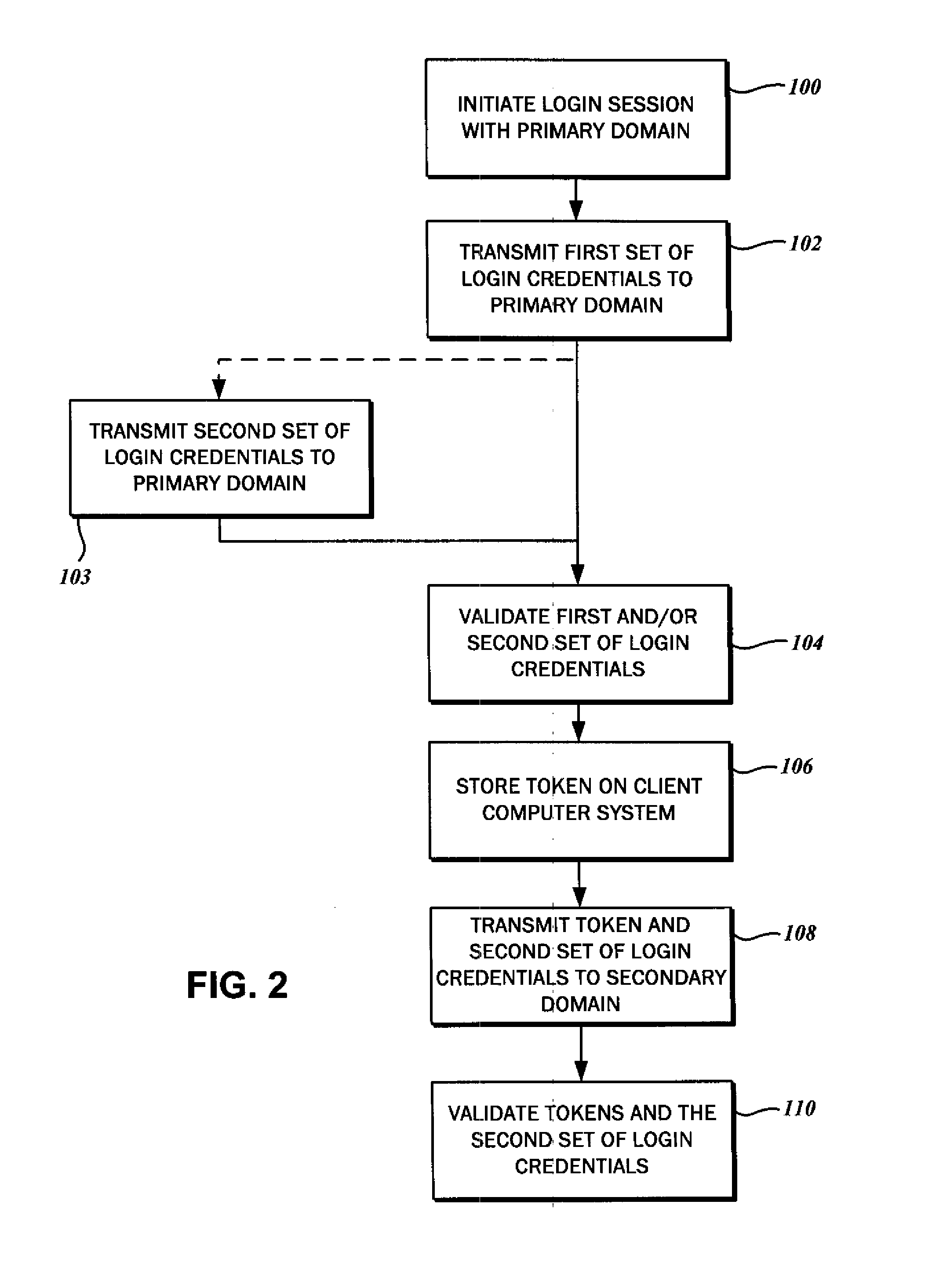Single sign on with multiple authentication factors
a technology of authentication factor and single sign-on, applied in the field of authentication method and system, can solve the problems of password fatigue, less security, and compromised systems with the same account name and password combination, and achieve the effect of reducing the number of password-related help desk calls
- Summary
- Abstract
- Description
- Claims
- Application Information
AI Technical Summary
Benefits of technology
Problems solved by technology
Method used
Image
Examples
Embodiment Construction
[0020]Various embodiments of the present disclosure contemplate single sign-on with multiple authentication factors. The following disclosed methods for authenticating a client to multiple resources are understood to secure and simplify access thereto by minimizing the number of separate passwords. The detailed description set forth below in connection with the appended drawings is intended as a description of the several presently contemplated embodiments of these methods, and is not intended to represent the only form in which the disclosed invention may be developed or utilized. The description sets forth the functions and features in connection with the illustrated embodiments. It is to be understood, however, that the same or equivalent functions may be accomplished by different embodiments that are also intended to be encompassed within the scope of the present disclosure. It is further understood that the use of relational terms such as first and second and the like are used ...
PUM
 Login to View More
Login to View More Abstract
Description
Claims
Application Information
 Login to View More
Login to View More - R&D
- Intellectual Property
- Life Sciences
- Materials
- Tech Scout
- Unparalleled Data Quality
- Higher Quality Content
- 60% Fewer Hallucinations
Browse by: Latest US Patents, China's latest patents, Technical Efficacy Thesaurus, Application Domain, Technology Topic, Popular Technical Reports.
© 2025 PatSnap. All rights reserved.Legal|Privacy policy|Modern Slavery Act Transparency Statement|Sitemap|About US| Contact US: help@patsnap.com



